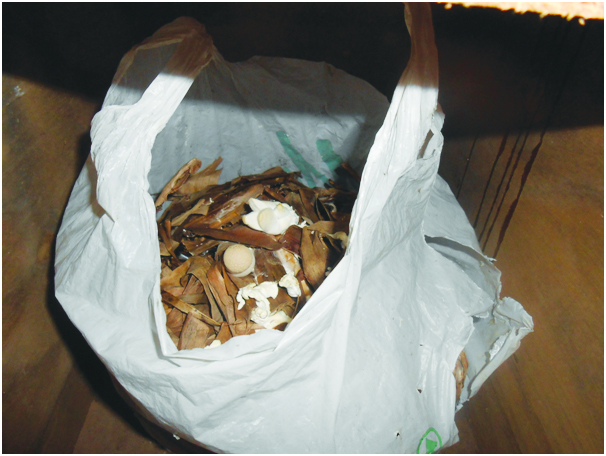


OUT and ABOUT
I love mushrooms — the look of them, the way they grow, the huge diversity in colour and shape.  Mushrooms are fascinating. Used as food, as medicine, for inducing trances, they have a unique place in the mythology and food lore of many countries.
Mushrooms are fascinating. Used as food, as medicine, for inducing trances, they have a unique place in the mythology and food lore of many countries.
A few weeks ago — a young friend spent a happy Saturday morning giving me fast track training on how to grow my own mushrooms. I was very excited at the thought of picking my own crop from my garden shed.
The kingdom of fungi is distinguished from plants by a lack of chlorophyll — and therefore fungi have to derive nutrition from an external substrate — but they will grow on a wide variety of media. We chose a banana plant — recently felled after yielding up its huge hand of bananas and starting to decay in the compost heap. First we ripped the leaves and stem layers into a manageable size and soaked them in fresh water. We did this in the bathtub as I had no other container large enough. After soaking them for half a day the water is squeezed out and the material packed tightly into plastic packets. Mushroom spawn is spread onto the substrate at intervals through the bag. I did this without Chido, the mushroom Queen, and who knows if I got it right.
My instructions were then to leave them in a dark place for several weeks until the bags went white — showing that the spawn had taken. It seemed so simple and I was very excited when a few weeks later (probably five not the promised four) the packets were showing a rash of white. I removed them from their dark cardboard box and put them onto a shelf in the shed and waited for mushrooms to appear. Some did — but they were not very shapely and not as prolific as I had hoped — a far cry from what I have seen Chido produce in her own spaces.
All the same it was fun — and I need a follow up lesson. The banana leaves may not have contained enough nutrients. She advises dried maize cobs — and it’s a good season for that now — or coffee grounds. Water hyacinth makes a good one apparently and if you live near open water there is plenty of that around. I had spawn for king oyster mushooms which are supposed to be amongst the easiest to grow. But there is a huge variety of both wild and cultivated mushrooms. Chido recently spent three months in China where mushrooms are revered as a food source and where huge mushroom farms sprout in many centres.
Another friend is growing lovely shitake mushrooms on old coarse barked gum logs. The logs are piled next to his house under shade cloth and he regularly innoculates them with spawn and several weeks later is picking a substantial crop.
Zimbabwe boasts many varieties of fungi. Recently produced by fungus fundi Cathy Sharp is a Pocket Guide to Mushrooms in Zimbabwe (available from Mukuvisi bookshop) — a good start to tracking and identifying some of our local delights — though a caveat at the beginning of the book quotes an old Czech warning — “All mushrooms are edible; some of them only once!” Pictures are amazing, showcasing the range of different colours and habitats – from lilac, to yellow, through bright red and orange and all the earthy shades of mushrooms we love to eat in happy rainy seasons.
I am ready to raid harvested maize fields for corn stalks and dried cobs and get cracking on the next crop. Look forward to more mushrooms and sharing some delicious recipes.
– g.jeke@yahoo.com